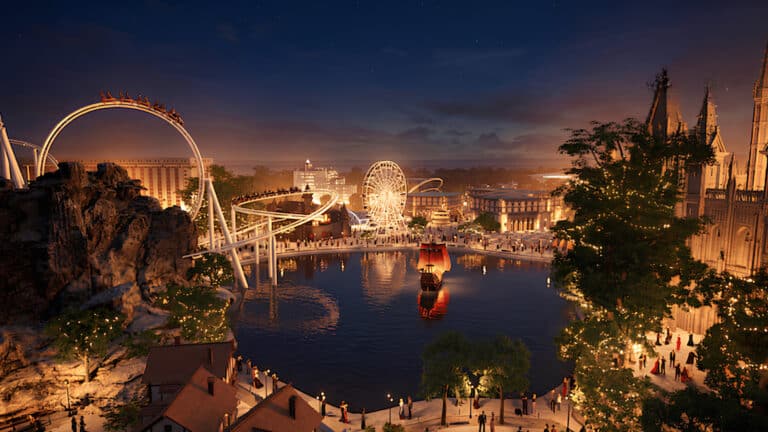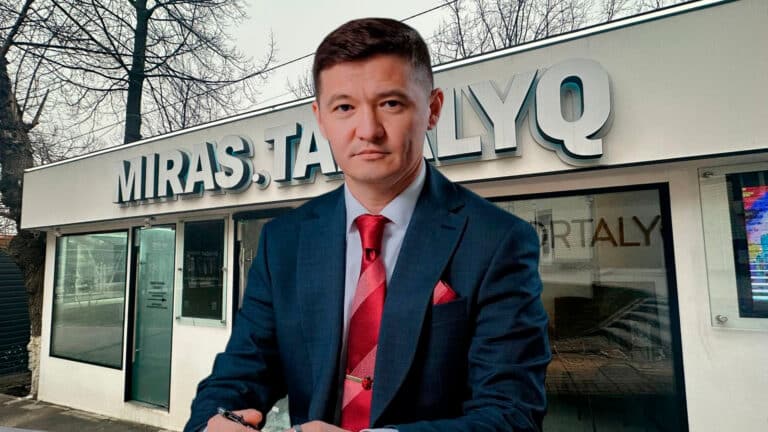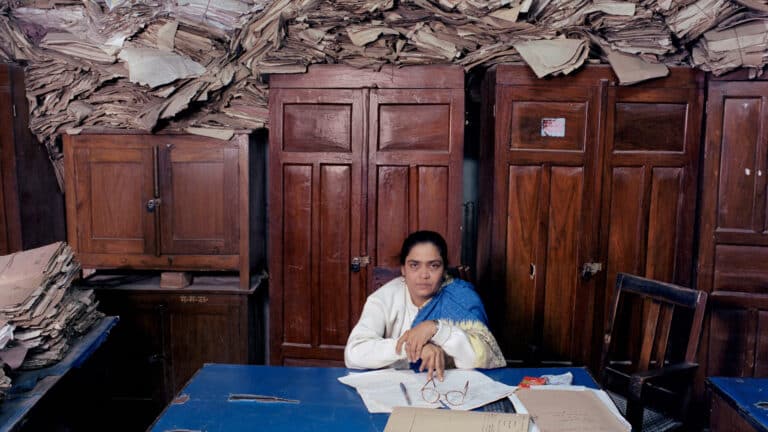The town of Abay, which was named in honor of the famous Kazakh poet Abay Kunanbayev, is located in the Karaganda region. It’s an administrative center of Abay district since 2002. The district includes three big settlements,Topar, Yuzhnyi and Karabas, as well as 33 small villages. The author of the Real Kazakhstan project by Kursiv edition and Chevron tells a story of how the town lives now.
Abay is eight kilometers away from Karabas railroad station and 30 kilometers southwest of Karaganda. The highway Karaganda-Zhezkazgan-Kyzylorda lies through the town. It also has connections with the neighboring towns of Shakhtinsk and Saran by bus transportation.
If someone wants to travel from Karaganda to Abay he or she has to ride buses #146 (Karaganda-Abay) or #122 (Karaganda-Topar) or just take a taxi.
Among important enterprises of Abay are:
• Abayskaya coal well;
• Coal preparation plant;
• Woodworking integration plant;
• Home building factory;
• Abay garment factory (which started work again in 2019);
• Bakery plant;
• KaragandaUgleStroy;
• Karaganda hydroelectric plant #2 (in Topar).
There are also several educational centers including Mining Secondary School and Extramural Energy Secondary School.
The Town Built by Prisoners
In 1949, Soviet authorities decided to start extraction of coal in the Chrubay-Nura district of the Karaganda coal basin. This is a dark page of local history because thousands of prisoners from Karlag and Peschanlag (two prisoner camps) were forcibly involved in the construction of the Churubay-Nura settlement throughout 1949-1957.
Before 1957 there were a lot of fences with barbed wire and armed guards on watchtowers. They controlled prisoners while the first streets of the town and railroad had been constructed. During the first several years of coal mine development in Churubay-Nura, the mineworkers had also built sporadic settlements such as Karagan, Kyzyl, Volnyi and Novodolinka. For example, the regular Karagan settlement had consisted of three smaller settlements: North Karagan, South Karagan and New Karagan. The last one was also an area where the prisoners who built the Topar mine lived.
In 1954 Churubay-Nura gained the status of an urban-type settlement.
Two years later when a large group of construction workers from Ukraine came to Churubay-Nura, a new life for the town had begun.
«I am from Rivne, Ukraine. Along with many other young girls and boys, I went to Kazakhstan. Our travel to Karaganda took seven days, but this was interesting. The train was decorated with slogans, there was music playing and people singing songs,» recalled Natalya Muzychuk.
In 1961 the town settlement Churubay-Nura disappeared because the town of Abay was created by the decree of the Supreme Council of the Kazakh Soviet Republic. It was supposed to be a town of coal mine workers. Later the town named in honor of Abay became well-known as a place where the prominent Olympic champion Serik Sapiyev was born.
Development under State Program
During the Soviet times, Abay used to be a big town with a population of 46,533 people as of 1989. In the course of Gorbachev’s Perestroyka, the collapse of the USSR and the economy’s transformation under independent Kazakhstan, the vast majority of mines and enterprises were closed. After that, thousands of people decided to leave the town and head to Russia, Germany and Ukraine. By 2005 the town’s population decreased two times to 27,957 residents.
However, as statistical data shows, the number of Abayresidents is no longer shrinking. Instead, it has been increasing recently. As of 2019, there were 28,363 people.
In 2008 local authorities initiated renovation work inside the town; they built or restored some public gardens, amenities and lighting. The water supply system pipelines had also been renewed.
Under the state program devoted to development of single company towns, all abandoned buildings in Abay are currently being destroyed. The empty spots will be used as construction sites for new modern apartment buildings.
.jpg)
«These abandoned houses became a threat for those who live close to them. There is a residential sector, kindergartens, schools and hospitals nearby. Moreover, by demolishing these buildings we can make our town much more beautiful,» said Aydos Zhakenov, deputy head of the Abay district.
Despite the fact that Abay still looks like a regular Soviet town with a Victory Park and World Word II Memorial, some new monuments were built in the center. For example, a new Union sculpture symbolizes the unity of three Kazakh zhuzes. Another monument with a golden snow leopard is a symbol of Kazakhstan’s intention to achieve its long-term goal of economic development.
.jpg)
The main orientating point in Abay is a sculpture of three white horses that symbolizes the people’s honor to these beautiful animals. Locals just love walking around here to enjoy good weather and meet friends.
.jpg)
The Abay’s Pride
.jpg)
In 2020 when Kazakhstan celebrated the 175thanniversary of AbayKunanbayev, a new monument in honor of Abay was opened. Another local poet Amanzhol Altayev attended that event.
«Abay is a beacon of our nation; this is a core symbol of spiritual values of our people. Everything we have in terms of spirit Abay had already shown in his writings,» he said.
 Photo: facebook.com/serik.sapiyev
Photo: facebook.com/serik.sapiyev
Another object of pride in Abay is the local boxing school, which has prepared such boxing stars as Oleg Maskaev (world champion in high weight), Ablaykhan Zhusupov (multiple world champion) and Natalya Ragozina (world champion). Even though she is a naturalized Russian now, she was born in Abay and started to train right here.
However, the most famous boxer from Abay is Serik Sapiyev, who won the Olympic games in London. Since then Abay is called «the hometown of the Olympic champion.» He is also a many-time champion of Kazakhstan and holder of the Vel Barker Trophy.
When he won the Olympics, Kazakhstan’s Boxing Federation decided to open several boxing centers. Such a center in Karaganda was named after Serik Sapiyev.
Abay District
Since 2002 the town of Abay is an administrative center of the Abay district. Two settlements, which are well known outside of it are Topar and Zhartas.
.jpg)
The settlement of Topar is a former center of the district. Currently, more than nine thousand people live here. It’s well known for extremely low electricity and heating bills. There is a lot of Soviet heritage in Topar including the cultural center Energetic. The streets here are clean and smooth.
.jpg)
Three kilometers away from Topar is Karaganda hydroelectric plant #2, which is a part of the North Zone of the United Energetic System of Kazakhstan. It used to be a state property but now is a part of Kazakhmys corporation. The energy it produces covers the needs of many companies in Karaganda, Zhezkazgan and Balkhazh regions. The rest of the energy is suppling to other consumers in the country.
.jpg)
The complex of green-houses near the plant is also an important part of life in Topar. It provides jobs for more than 300 people and allows them to grow tomatoes, cucumbers, bell pepper, lemons, and even such tropical things as papaya, grapefruits, pomegranate, oranges and mandarins. The Topar Teplitsy company currently exports these products all over Kazakhstan and Russia.
.jpg)
The artificial lake of Topar, which contains 274 million cubic meters of water was built in 1960. It helps to regulate over-years storage of water, produces energy at Karaganda hydro energy plant #2 and serves as a water source for irrigation purposes.
.jpg)
It’s also well known as a popular destination for recreation and fishing. There are a lot of various recreation bases: Pacific Bay, Golden Sands, Bakyt, etc. Many of them work throughout the year and have nice beaches and modern playgrounds for children.
.jpg)
Another prominent recreation spot for leisure is Zhartas resort near the Zhartas reservoir and local forestry zone. It is popular among the residents of the entire Karaganda region.













